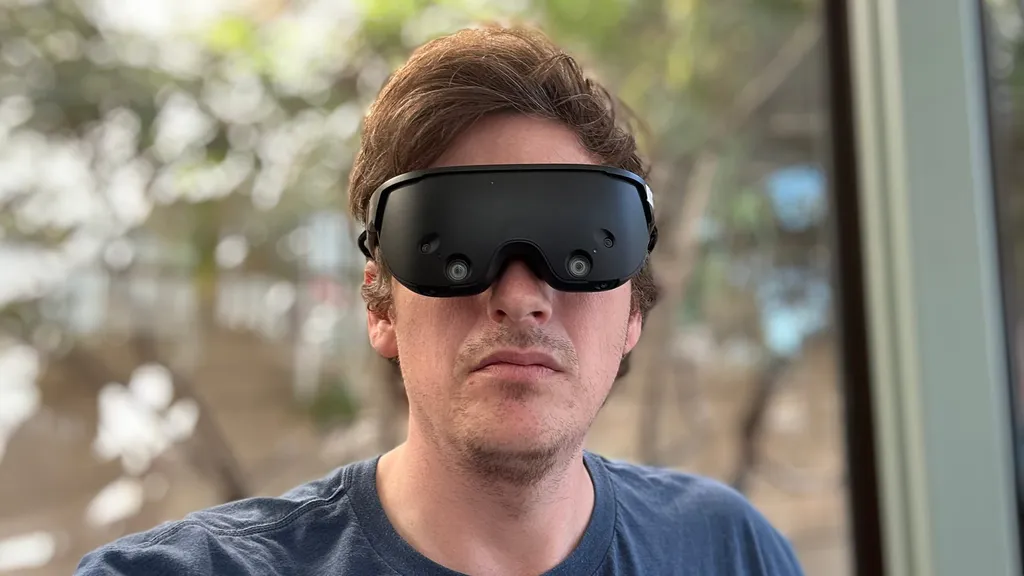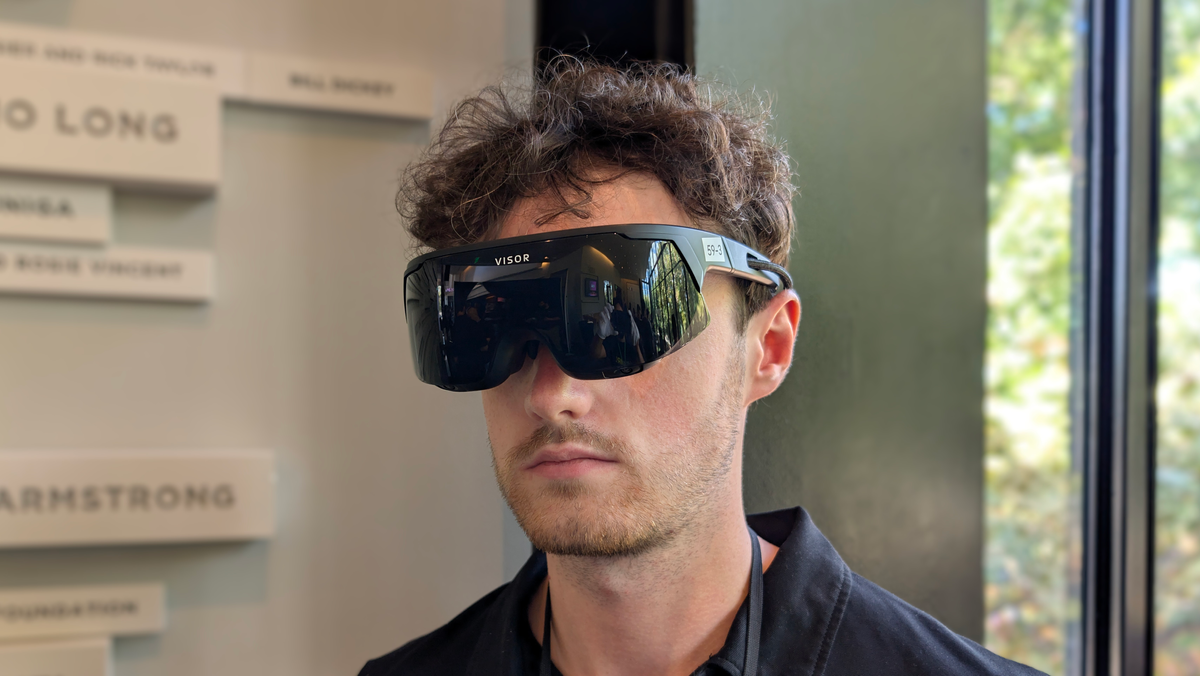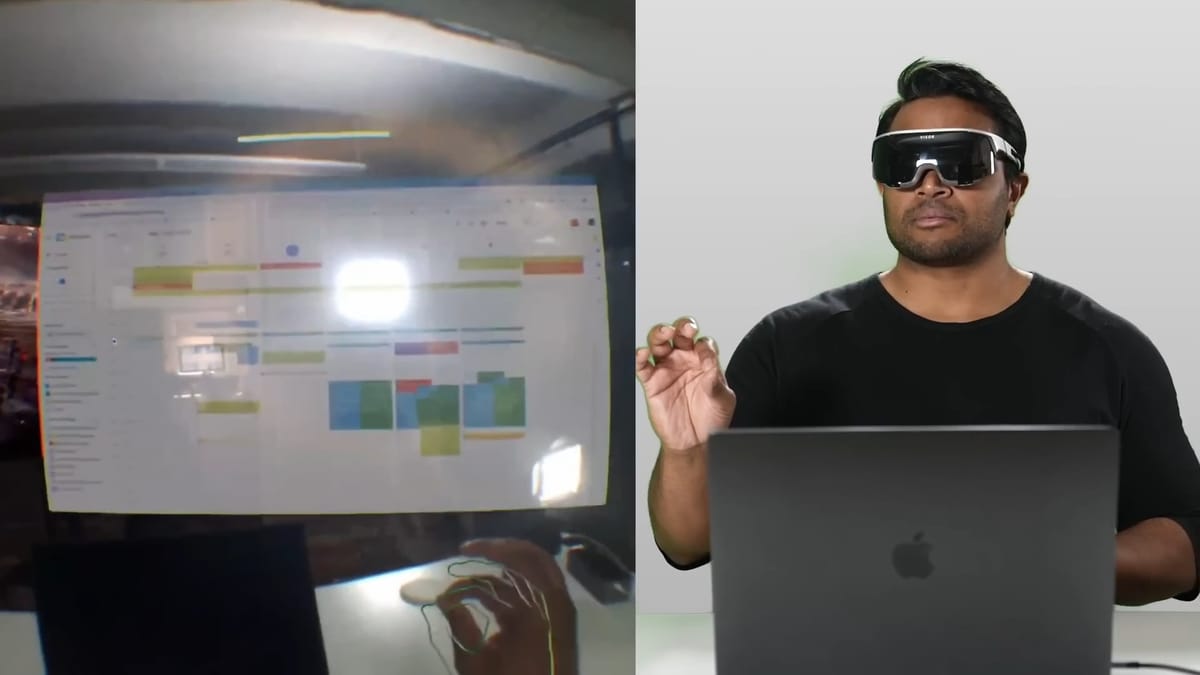Immersed founder Renji Bijoy met me in a Starbucks in Palo Alto immediately after Meta Connect to offer UploadVR a second impression of the Visor headset they're developing.
The demo went better than the first, but if you read David Heaney's writeup you'd know that isn't a high bar to overcome.
Bijoy said this demo ran at 60 frames per second and, in headset, I watched the rendering struggle to draw a scene as I turned my head right to left, and I saw a virtual desktop that wasn't very readable.
"Hopefully next time, we have foveated rendering @ 90hz so things don't heat up so quickly instead of running 25M pixels at 60hz," Bijoy wrote to me after the demo.
During the demo, Bijoy said the headset needed to cool and, after I removed the Visor, he stroked its front shell against an iced coffee as I asked a number of questions.

"Based off the last night's call, likely we're going to do this slower than I thought we would," Bijoy told me. "Likely what we're going to end up doing is having initial units go out probably closer to November to a select few people."
"As long as we can get to the standard edition headsets mass production by summer, I think I'll be happy," Bijoy said. "We need to work with our partners to get a real fix out there before we ship this thing."
When asked to say how many headsets he planned to ship in November, Bijoy replied "I can probably push for 50 to 100 of 'em'." He said they had been considering a "plastic shell for the battery" but now "it might be better for us to consider metal cooling."
I pulled up a desktop inside Visor and activated passthrough with a "nose-pointed reticle". After cooling the headset down, performance seemed to improve for passthrough and for rendering, but the camera seemed low resolution and passthrough did not compare favorably with either Quest 3 or Vision Pro.
"We don't anticipate using this perception stack long term," Bijoy said.
He suggested the company would be "trying to" move to Android XR and its associated technology stack. Bijoy asked me to name the operating system as Google hasn't yet, and when I did he pointed to it as a successor to the Qualcomm tools he indicated they were using for my demo.
Overall, I saw something functional or semi-functional rather than "barely functional" as David did a week earlier. Bijoy paints a picture of taking pre-orders for as much as another nine months before shipping anything beyond the handful of units they'll have on hand for their early testers.
When I suggested that the product still seemed like it had a long way to go, Bijoy replied "maybe." He mentioned the possibility of doing "a second roadshow" with "features like eye tracking that should be done by then." We'll of course bring you those updated eyes-in impressions as soon as we have them.
As it is after two demos, UploadVR cannot recommend pre-ordering a Visor given the state of the hardware and software suite shown after Meta Connect. We've yet to see a clear, high-resolution, low-latency highly responsive reproduction of a desktop inside Visor – its primary pitch as a product and software platform – and it sounds like Immersed's plan is to iron out that experience with a couple dozens early buyers later this year.
Aside from the inherent difficulty of putting together a hardware platform like this on limited resources, Immersed's timeline could resemble those of other efforts, like Lynx, which blew through its window in which a competitive product could be built against the likes of Meta and Apple.
Still, Bijoy courts the underdog spirit and suggests there are still as-yet-unnamed parties helping support the company's financial standing as it aims to deliver.

































